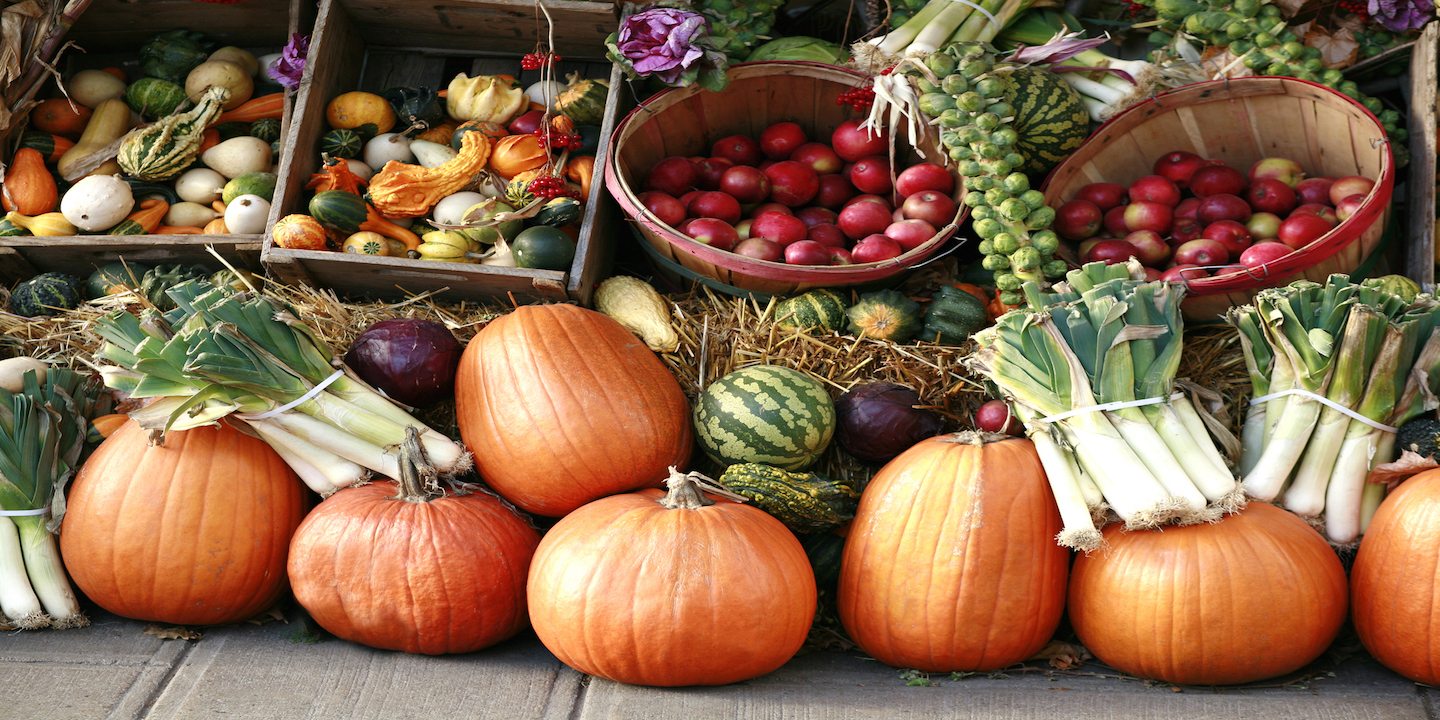With the colours changing on the trees, it is time to take advantage of those last good trips to the famers market and stock up on delicious, nutritious fall foods. There are several reasons to eat foods that are abundant at this time of year. We want to eat a seasonal and varied plant-rich diet to support our body and its natural processes. Michael Pollen says “eat foods, mostly plants, not too much.” I would add (among many things) to eat seasonal foods, mostly plants, not too much because of their benefits.
It is so easy to forget about seasonal eating with modern day food processing and worldwide distribution. The lines have gotten blurred as to what foods are appropriate when, creating a monotone diet that was not possible in the past. Here are a few reasons why eating seasonally is important:
Most flavour and nutritional value:
Foods travelling less km will lose less nutrients and therefore provide greater freshness, flavour and health benefits. Plants get their nourishment from the sun and soil so when that changes so do their nutrients. Have you ever eaten a spaghetti squash in the spring and realized it is much harder to shred and tastes bland? Or a peach in the winter that tastes nothing like the fresh ripe juicy peach from the summer? This is exactly what I am talking about. Nutritional changes in food have been studied often for example a Japan study found 3 times more vitamin C in spinach harvested in the summer versus winter.
Eating seasonally supports our health-promoting microbiome:
What is your microbiome you ask? It is the abundance of good bacteria that resides in our digestive system (and all over actually) that help your overall health including immune health, digestive health, skin health, blood sugar balance, weight management and so much more! Our gut bacteria is ever changing for the good and eating seasonally contributes to this. Fall foods contain things like resistant starch (in foods such as onions, leeks, garlic) which feed the good bacteria, as well as polyphenols providing antioxidant support. A highly processed diet with sugar, unhealthy fats and carbs can negatively shift the microbiome within 24 hours! Luckily with can remain calm in knowing it can shift back within that time frame by eating a plant-rich healthy diet. So you can forgive yourself for indulging over the weekend. One idea is that in the fall we want to limit fruit that we indulged in in the summer as too much fructose-rich fruit and a more sedentary life may cause a yeast overgrowth leading to feeling bloated, moody and with skin changes.
Lower prices:
Due to an abundance of produce that is easier to grow prices usually drop.
Decrease carbon footprint:
I am all for outsourcing foods such as avocado, superfoods such as matcha or acai berries, and cold pressed coconut and olive oils but we should take advantage of what we have close to us to reduce our food mileage.
Community:
Finally there are many studies on the benefits of building a community around you to live longer and feel happier and what better way to do that than around food! Take advantage of those friendly faces at the farmers market stalls or CSA pickups while getting your seasonal foods, but why not build a community around cooking those foods as well. It could be with family on the weekend prepping meals for the week, or with friends one evening during the week to break up the mundane work work. Get creative :)
Check out a list of seasonal foods below. These foods are rich in phytonutrients and fibre, along with delicious resistant-starch options:
- Acorn Squash
- Artichokes
- Arugula
- Beets
- Broccoli
- Brussel Sprouts
- Butternut Squash
- Celeriac
- Delicata Squash
- Escarole
- Garlic
- Leeks
- Onions
- Pumpkins
- Radishes
- Rutabega
- Spaghetti Squash
- Sweet Potatoes
- Sunchokes/Jerusalem Artichokes
- Turnips
Seasons should form the natural backdrop for eating and in Canada we have wonderful seasons to take advantage of for our overall health.
In heath & happiness,
Dr. Karen




